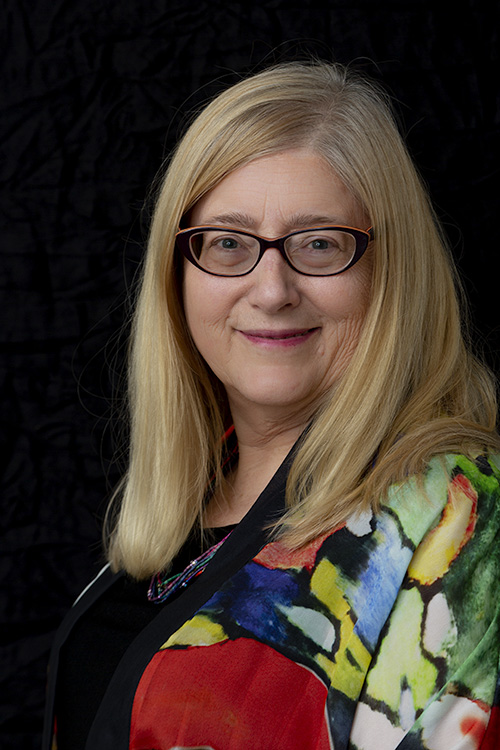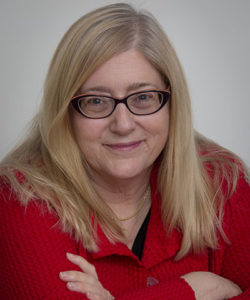Schroedinger’s Breast: Welcome to Mammogram-O-Rama
When the mammogram center called the week after my scan, I knew it was not good news. Those folks don’t ring you up to say hi.
“Your scan shows calcifications,” the woman said. “We need you to come in to see if we can resolve your case. We’d like you to wait after this mammogram and talk with the radiologist.”
I scheduled the scan for the next week and spent the intervening days in true bionerd fashion, reading everything I could about breast calcifications and preparing a list of questions for the doctor.
Why didn’t I just wait to hear the word from on high? Trusting doctors is not my style. I came by that skepticism the hard way. When I was pregnant way back in the eighties, the obstetrician misdiagnosed my twin pregnancy as a singleton, decided my menstrual dates were wrong, changed the due date without ordering a sonogram, and induced my boys two months early. My son who has cerebral palsy was the undiagnosed and unmonitored second-born twin. I went back to school when my boys were little and earned a graduate degree in biology, in part to launch my biotech career, and in part so that I could navigate medical spaces with greater skill. And now that I’m seventy, at the nexus of medical sexism and medical ageism, that training does come in handy.
When I hit the medical journals before my second mammogram, the first thing I learned was that women who use estrogen-only HRT (as I do) have an increased chance of an abnormal mammogram and a decreased chance of breast cancer. A report from Cancer Connect documented there was no statistically significant difference in the number of invasive breast cancers between estrogen-only HRT users and a control group, despite the higher mammogram recall rate. So women like me have an increased rate of false positive test results.
Another report showed that for women overall, there is a high rate of overdiagnosis and overtreatment for breast cancer based on mammography, including unnecessary biopsy and surgery. Welcome to Mammogram-O-Rama, your conveyer belt to a potentially unnecessary mastectomy.
But wait—if the mammogram is an imperfect tool, surely a biopsy is definitive? Alas, no. A study in the Journal of the American Medical Association showed that when a trained clinician and an expert pathologist look at the same breast tissue sample, they often do not come to the same conclusion. For invasive cancer the concordance was high, but for atypical cells, the pathologists reached the same conclusion less than half the time—with a bias toward a higher risk classification. So the biopsy stage of Mammogram-O-Rama can lead to unnecessary surgery—the next stop on the conveyer belt.
Over half of women in our seventies have calcifications in our breasts. For women who have calcifications in a linear pattern, as mine are, the concern is that these may be an early sign of ductal carcinoma in situ (DCIS), which is a Stage 0, typically noninvasive cancer that usually will not develop into an invasive form in a woman’s lifetime. An article in the British Journal of Cancer called “To Treat or Not to Treat?” put it this way: “Difficulty in discerning harmless lesions from potentially invasive ones can lead to overtreatment of this condition in many patients.” The report went on to say “Despite being pre- or non-invasive, DCIS is often regarded as an early form of (Stage 0) breast cancer. Therefore, conventional management includes mastectomy or breast-conserving surgery supplemented with radiotherapy; in some countries, adjuvant endocrine therapy is added. Regrettably, current therapeutic approaches result in overtreatment of some women. Women with DCIS are labelled as ‘cancer patients’, with concomitant anxiety and negative impact on their lives, despite the fact that most DCIS lesions will probably never progress to invasive breast cancer.”
The entire conveyor belt, from overdiagnosis to overtreatment, is summarized by a diagram in a Five Thirty Eight article, taken from U.S. Preventive Services Task Force (USPTF) data. In sum, the number of breast cancer deaths averted by mammogram is likely smaller than the number of surgeries in which harmless cancers are “cured.” And on top of that, for DCIS in particular, treatment does not statistically decrease mortality.

As a side note, the woman who wrote the Five Thirty Eight article, who has studied this data extensively, has decided never to have a mammogram.
Schroedinger’s Breast
I took this data to my second round mammogram, which was scheduled, not at the mammogram center, but at a large university cancer hospital. After the scans, wearing nothing but a patient arm band and a flimsy gown, I perched in the “Specialized Waiting Area” for an hour. I imagined the radiologist as a large man in a white coat, looming over me and insisting that I have a biopsy, whether I wanted one or not. But the radiologist I actually saw, Dr. Titt (not her real name), was a tiny woman with big glasses. Not intimidating at all, even though her opening line was, “I’ve read your films and I recommend a biopsy.”
I launched into my concerns about false positive mammograms, discrepant interpretations of biopsies, and surgery on ductal carcinomas that would never become invasive in a woman’s lifetime.
“True,” she said. “If it were a mass, it would be clear that it should be treated. For calcifications like yours, it’s less clear. But the problem is, how to know which ones will become invasive? I just had a patient whose DCIS did.”
Exactly. How do you know you won’t be that patient? But on the other hand, if you are overdiagnosed and overtreated, how does that experience of mastectomy and radiation affect your quality of life?
“What’s the harm in waiting six months and repeating the scan to look for changes?” I asked, thinking of an article that discussed moving to the “watchful waiting” model: “We can learn from the prostate cancer experience with active surveillance to recognize the safety of following more indolent disease and apply that to the setting of DCIS, which is not invasive cancer.”
Dr. Titt shrugged. “That’s six months for the cancer to grow—if it’s going to grow.”
She gave me the paperwork to schedule a biopsy. “This is still my recommendation. Call this number if you change your mind.”
I doubt that I will change course; the statistics are on my side. In six months I expect to see no change, and if I there is a problem, I am confident that six-months-from-now me will handle it. And by then there will be more research on molecular markers that indicate the risk level of a DCIS.
On the way home from the cancer hospital, I thought about one of my favorite foremothers, Barbara Ehrenreich, who published her book Natural Causes when she was 76. The prolific author of such great works as Nickel and Dimed decided that for her there would be no more cancer screenings, no more lectures about lifestyle, no more medical examinations. She wrote, “Not only do I reject the torment of a medicalized death, but I refuse to accept a medicalized life.” She died of a stroke five years later. I hope to live a good bit longer than she did (the average female lifespan in my family is 96). But I like the concept of just saying no to medical intervention when it makes good sense.
So here we are for now, with Schrodinger’s Breast. And if you aren’t on my mailing list, do sign up for blogs and newsletters. I guarantee an update when that six month scan rolls around.
I leave you with this disclaimer: I am not a doctor and cannot advise you about your health decisions. What I can say is this: You and your doctor are partners in health. They know their medicine, and you know your body; you’ve lived in it for a long time. Learn what you can about your health issues, ask questions, and remember that decisions about your health are yours to make.
I typically publish a guest blog by a Woman of a Certain Age on the tenth of each month. To be considered, please consult the guidelines before you submit your essay. Pieces by women authors of new or upcoming books are most welcome. And I especially encourage women of color, women with disabilities, women of size, and queer women to send essays.



19 Responses
Thank you for the insightful article. I just love your style and approach to problems. Looking forward to an update in six months!
Thank you, Anne. Fingers crossed!
Hello Everyone – This “Mammogram-O-Rama” essay is generating some great comments and discussion. I’d like to encourage everyone who found this post interesting to please share on your own social media platforms. Everyone – especially women after midlife – deserves the chance to inform ourselves about our own health challenges, whatever they may be. We have the right to be full partners in our own healthcare decisions.
Thank you all for your thoughtful comments, and for sharing your experiences with healthcare.
All the best,
Stella
Great article, so important. Good for you! Too many people especially women just go along with unnecessary treatment. Among those who don’t want to, too few have your abilities to research. Two years ago my doctor wanted me to go on statins (I know what they do to the body) because my choloestoral level gave me a “8% chance of having a heart attack or stroke”. I replied, “You mean that I have a 92% chance of not having a heart attack or stroke and because of that you want me to risk terrible side effects”. My friend Dr Delon Canterbury of Deprescribing, said that it was really only 71/2 %. I have a new doctor now, a PA actually, very happy.
I first read Barbara’s self published pamplet about the history of witches and feminism. Love everything she did.
I am putting this on my Facebook page, I assume that’s OK with you. Women need to read this one especially
Indeed, Margo, too many of us think of our physicians as all-knowing. Maybe we want them to know everything, given that when we are in extremis, our health is literally in their hands. But for most of our interactions, we are quite capable of evaluating doctors’ advice given what we know about our bodies and what we can learn online about our health challenges. Yes, please do share this article – I hope it will be helpful to other women, and also inspire us to read about the issues we face with our ever-changing bodies. We can and should be full partners in our health care decisions. Thank you for sharing!
Great article! I’m 72 yrs old and just went for a mammogram last year where they found this little, tiny spot of calcification in my right breast. I had a wonderful Dr. who said “let’s be cautionary and we will recheck in 6 months.” Ok, I can do that knowing full well there is absolutely no history of breast cancer, back to the 5th generation on both sides of my parent’s families. Having worked in the health care industry for over 20 yrs, I, like you, am always cautious about the industry. The second mammogram showed no change in the calcification, the Dr. said it’s a wait and see situation. As for me, when the letter comes every 6 months “time for a new mammogram” I tell the Dr. I will see you in a year. Mammograms are so overutilized and becoming abused. I continue to be healthy, happy and stress-free because I know how the medical community works!! Thanks for enlightening me about something that was just so irritating to me, literally and generally…..”here let me squeeze you boobs just one more time!!!”
Thank you, Ruth! Especially for that last line! I will treasure it always.
You presented very important and not readily available information. I am 61 and just went through this process after concerning calcifications in a mammogram 24 months ago. My partner wanted me to have the biopsy just in case, so I did. It was inconclusive.
If I had it to do over, I would not have done the biopsy. All they do is tell you to have another procedure and then another and another. I am now a year past the initial mammo and no changes.
I understand the medical community is being cautious. But I wish they didn’t push and manipulate so much.
The only thing I would recommend is doing a mammogram ever 12 to 18 months, even in your 50s. Because I didn’t do that, there was no mammogram to compare the new one to which would have shown if there were any changes.
Hello Ghermine,
Thank you for sharing your story. How challenging that you were asked to have repeated procedures! And hearing that after a year your mammogram shows no changes is very telling.
I’m very glad we are sharing what we know — both through reading medical journals and through hard-won experience. These choices are difficult, but shared knowledge is powerful.
Wishing you all the best.
Thank you for sharing your explorations and research into this important issue of when to allow medical interventions
Especially for women.
You’re most welcome, Rose!
Good information. Thank you for this. A cancer diagnosis can be so scary and having the information you shared may help us think more clearly.
I do hope so, Wendy. Knowledge is power, as they say.
Hello Stella!
The same exact thing happened to me at age about 72. I’m a nurse so knew the drill but you were sooo thorough. Good for you. However I opted for the core biopsy. The lovely doctor allowed me to play Chopin on my iphone enjoyed by the entire staff. It was no big deal and results were benign. No DCIS even which can be a can of worms.
Next year, same abnormal mammogram. Ultrasound looked the same with no growth or changes. No biopsy needed. Next year, just mammogram. No changes, no ultrasound needed. This is UCSF very reputable. So…I was happy I went for the core biopsy. I walked home half a mile after it. Really no big deal, they’re good at doing them.
Hope this helps a little. Onward to self-actualized and joyful aging!
Thanks for sharing your story, Lora, and I’m glad you were happy with your decision — and that your outcome has been so good. I decided to hold off in part because of the study showing discrepancies in pathology readings — in particular, toward greater abnormality. We’ll see how things look at six months. And it’s perfectly reasonable that different women would make different choices.
I’m sorry to hear that you have been involved in this medical maze. A moderate position to take would be to get the biopsy, see what it said and then continue as it makes sense at the time. I’ve had breast calcifications since age 40. That’s why I used to get a yearly mammograms for a while. At age 65 or so they switched me to every other year because the calcifications had not changed in 25 years of testing. What I hate most about what you went through is that they had the callousness to scare the ‘s’ out of you by sending you to the Duke Cancer Hospital just for a second mammogram. It seems to be a form of psychological intimidation.. leading many other women to accept whatever procedure they recommend out of fear. I went through this with my dad when I was his caretaker. They sent us to that same building for something as banal as a simple urinalysis. My dad was 92 at the time and suffering from frontal lobe dementia. He was however together enough to request that they not let him know the results. He knew that according to his genetics he was likely to die within a year from natural causes ( both parents and 3/4 of his brothers died at exactly 93. .. so he asked that no one tell him the results. I honored this request and so we never knew what caused him to die exactly one year later. I agree with you that much of this medical not so merry go round is unnecessary, but if it were me, I know I would get the biopsy done. I’m still angry that they tried to manipulate you into going their way or the highway.
Thanks Steevie, and so interesting about your dad. Reminds me of when my mom’s dad was diagnosed with prostate cancer in his late eighties. He already had dementia and the physicians convinced my grandmother that he should have surgery. My mom, who was an RN, always believed that surgery shortened his life. Glad you respected your dad’s wishes.
As for the cancer hospital: Yes, I had that same thought when I went for my second mammogram. Talk about stigmatizing! But when I got there I realized their mammography equipment was a lot more sophisticated, which moderated my view.
In this situation, seems like getting a biopsy or adopting a watchful waiting approach are both reasonable choices–totally up to the woman involved.
Stella,
this was a great article. You did a great job with this. I had the zero stage breast cancer. I ended up having surgery but after getting two opinions, I refused drug therapy. Did undergo radiation and wish I hadn’t although it was an education in the heartless rendering of treatment to cancer patients.
Hi Jamie, So sorry to hear of your difficult experience. I’m glad we are all sharing the choices we’ve made, in hopes this information is helpful to others. All best wishes!